Plaques en carbure Les plaques en carbure de tungstène sont des composants essentiels dans une variété d'industries, y compris la fabrication, l'exploitation minière et le travail des métaux. Connues pour leur dureté exceptionnelle, leur résistance à l'usure et leur durabilité, les plaques de carbure sont la solution idéale pour les applications exigeant solidité et longévité. Mais qu'est-ce qui les rend si spéciales ? Voici tout ce qu'il faut savoir sur les plaquettes en carbure, de leur composition à leurs applications, en passant par la manière de les choisir en fonction de vos besoins.
Qu'est-ce qu'une plaque de carbure ?
Les plaques de carbure, également appelées plaques de carbure de tungstène, sont fabriquées à partir d'un matériau composite composé principalement de carbure de tungstène (WC) et d'un liant métallique, généralement du cobalt ou du nickel. Ces plaques possèdent des propriétés incroyables, notamment une dureté extrême et une grande résistance à l'usure, ce qui les rend idéales pour les applications lourdes.
La plaque de carbure est un bouclier qui résiste aux conditions les plus difficiles, qu'il s'agisse d'une chaleur élevée, d'une friction intense ou d'un environnement corrosif.

Types de plaques en carbure
Voici un tableau détaillé présentant les différents types de plaques de carbure en fonction de leur composition, de leur application prévue et de leurs propriétés uniques.
| Type de plaque en carbure | Matériau du classeur | Dureté (HRA) | Caractéristiques principales | Applications |
|---|---|---|---|---|
| YG6 | Cobalt | 90 | Excellente résistance à l'usure, ténacité modérée | Outils de coupe, pièces d'usure |
| YG8 | Cobalt | 89 | Ténacité supérieure à celle de l'YG6, bonne résistance à l'usure | Outils d'exploitation minière, poinçons |
| YG15 | Cobalt | 87 | Ténacité élevée, résistance aux chocs | Outils de forage, matrices à usage intensif |
| YG20 | Cobalt | 85 | Résistance supérieure, résistance réduite à l'usure | Forage de roches, extraction de charbon |
| YT5 | Titane | 91 | Excellente résistance à la chaleur | Usinage à grande vitesse |
| YW1 | Nickel-Cobalt | 92 | Polyvalence, résistance à la corrosion | Applications aérospatiales, outils de coupe |
| YG10X | Cobalt | 91.5 | Grande résistance à l'usure, moindre ténacité | Coupe de précision, outils pour le travail du bois |
| YS2T | Cobalt | 92.5 | Excellente ténacité, anti-éclats | Forets à grande vitesse, plaquettes en carbure |
| ZP35 | Cobalt | 86 | Dureté et ténacité équilibrées | Pièces d'usure, matrices d'emboutissage |
| H10F | Nickel | 92 | Résistance à la corrosion, grain ultrafin | Outils médicaux, traitement chimique |
Matières premières et composition des Plaques de carbure
Ingrédients principaux
- Carbure de tungstène (WC) : C'est l'ingrédient phare. Connu pour sa dureté inégalée (après le diamant), le carbure de tungstène constitue la base de ces plaques.
- Classeurs : Les classeurs les plus courants sont les suivants
- Cobalt : Ténacité et résistance aux chocs.
- Nickel : Ajoute une résistance à la corrosion, en particulier pour les applications dans les environnements chimiques.
- Taille des grains : Plus le grain est fin, plus la plaque est dure et résistante à l'usure.
Composition détaillée
| Matériau | Pourcentage (%) | Fonction |
|---|---|---|
| Carbure de tungstène | 85-95 | Assure la dureté et la résistance à l'usure |
| Cobalt/Nickel | 5-15 | Agit comme un liant, offrant une grande résistance. |
| Additifs | <1 | Améliore les propriétés spécifiques telles que la résistance à la corrosion |
Applications des plaques de carbure
Les plaques de carbure sont incroyablement polyvalentes et sont utilisées dans tous les secteurs d'activité. Voici un aperçu de leurs applications :
| Application | L'industrie | Détails |
|---|---|---|
| Outils de coupe | Travail des métaux | Utilisé pour fabriquer des lames de scie, des couteaux et des forets. |
| Pièces d'usure | Exploitation minière | Idéal pour les applications de concassage de roches et de forage. |
| Matrices d'estampage | Fabrication | Garantit la précision des tâches d'emboutissage lourdes. |
| Composants résistants à la chaleur | Aérospatiale | Bonne performance à des températures élevées. |
| Outils résistants à la corrosion | Traitement chimique | Résistent aux environnements chimiques difficiles. |
| Machines de précision | Automobile | Utilisé pour l'usinage de composants de haute précision. |

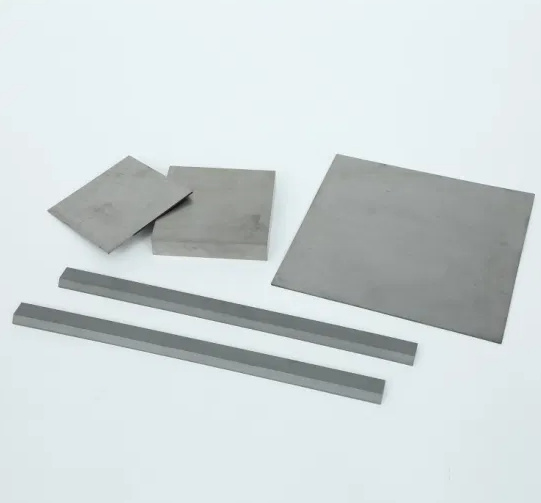
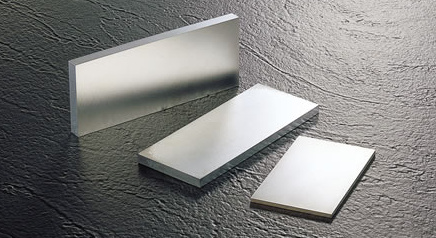
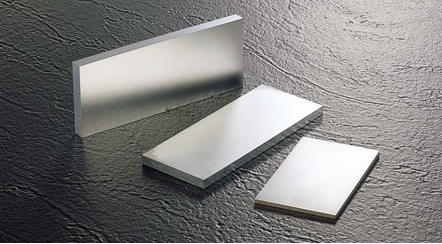
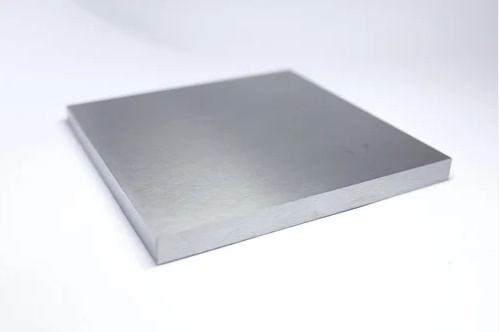
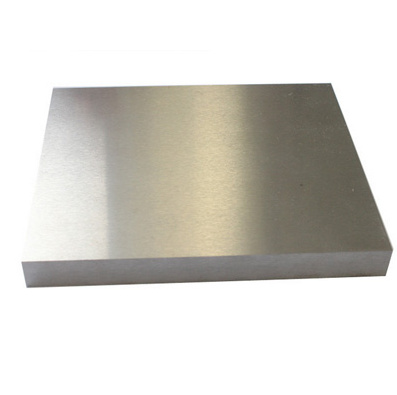
Déroulement du processus de production Plaques de carbure
Vous êtes-vous déjà demandé comment sont fabriquées les plaques de carbure ? Voici le processus de production simplifié :
- Préparation de la poudre :
La poudre de carbure de tungstène est mélangée à des liants (comme le cobalt) pour créer un mélange uniforme. - Pressage :
Le mélange est pressé sous haute pression pour obtenir la forme souhaitée. - Frittage :
La plaque pressée est chauffée à des températures extrêmement élevées dans un four de frittage. Cela permet de fusionner les particules et d'augmenter la densité du matériau. - Finition :
La plaque est rectifiée et polie pour répondre à des spécifications précises. - Contrôle de la qualité :
Chaque plaque est soumise à des tests rigoureux pour s'assurer qu'elle répond aux normes de dureté, de ténacité et de résistance à l'usure.
Propriétés matérielles des plaques de carbure
| Propriété | Gamme | Impact sur les performances |
|---|---|---|
| Dureté (HRA) | 85-93 | Détermine la résistance à l'usure et à l'abrasion. |
| Densité (g/cm³) | 14.5-15.5 | Une densité plus élevée garantit de meilleures performances. |
| Ténacité (MPa) | 2000-3000 | Une plus grande ténacité empêche la formation de fissures. |
| Conductivité thermique (W/mK) | 50-120 | La conductivité thermique élevée permet une meilleure dissipation de la chaleur. |
Spécifications, tailles, formes et normes
Les plaques de carbure sont disponibles en différentes tailles et formes pour répondre à des applications spécifiques.
| Spécifications | Gamme de tailles | Forme | Normes |
|---|---|---|---|
| Plaques minces | 1-5 mm | Rectangulaire, Carré | ISO 9001, ANSI |
| Assiettes moyennes | 5-20 mm | Rectangulaire, Circulaire | DIN, ASTM |
| Plaques épaisses | >20 mm | Personnalisable | JIS, GB |
Fournisseurs et informations sur les prix
| Nom du fournisseur | Localisation | Fourchette de prix (USD) | Spécialité |
|---|---|---|---|
| Kennametal | Mondial | 50-200 par assiette | Plaques industrielles de haute qualité |
| Sandvik | Suède | 70-250 par assiette | Outils de coupe de précision |
| Carbure cémenté de Zhuzhou | Chine | 30-150 par assiette | Des solutions rentables |
| Matériaux Mitsubishi | Japon | 100-300 par plaque | Applications résistantes à la chaleur |
Comment choisir la bonne plaque de carbure
Choisir la bonne plaque de carbure, c'est comme choisir la bonne armure pour votre application. Voici un tableau comparatif pour vous aider :
| Critère | Option A : YG6 | Option B : YG15 | Meilleur pour |
|---|---|---|---|
| Résistance à l'usure | Haut | Modéré | YG6 pour les outils de coupe. |
| Solidité | Modéré | Haut | YG15 pour les applications de forage. |
| Résistance à la corrosion | Faible | Modéré | YG15 pour les environnements corrosifs. |
| Prix | Abordable | Prime | YG6 pour des options économiques. |

Avantages et limites de la Plaques de carbure
| Avantages | Limites |
|---|---|
| Dureté et résistance à l'usure exceptionnelles | Fragile en cas d'impact extrême |
| Résistance élevée à la chaleur et à la corrosion | Coût plus élevé que les alternatives en acier |
| La longue durée de vie réduit la fréquence de remplacement | Nécessite un usinage de précision pour la personnalisation |
FAQ
| Question | Réponse |
|---|---|
| Quelle est la durée de vie typique d'une plaque de carbure ? | Selon l'utilisation, les plaques en carbure peuvent durer jusqu'à 5 fois plus longtemps que les plaques en acier. |
| Les plaques de carbure peuvent-elles être recyclées ? | Oui, les plaques de carbure sont 100% recyclables. |
| Les plaques en carbure sont-elles chères ? | Bien qu'ils soient plus coûteux au départ, leur durabilité les rend souvent plus économiques à long terme. |
| Quelles sont les industries qui bénéficient le plus des plaques en carbure ? | L'exploitation minière, la fabrication et l'aérospatiale font largement appel aux plaques de carbure pour leurs performances. |


